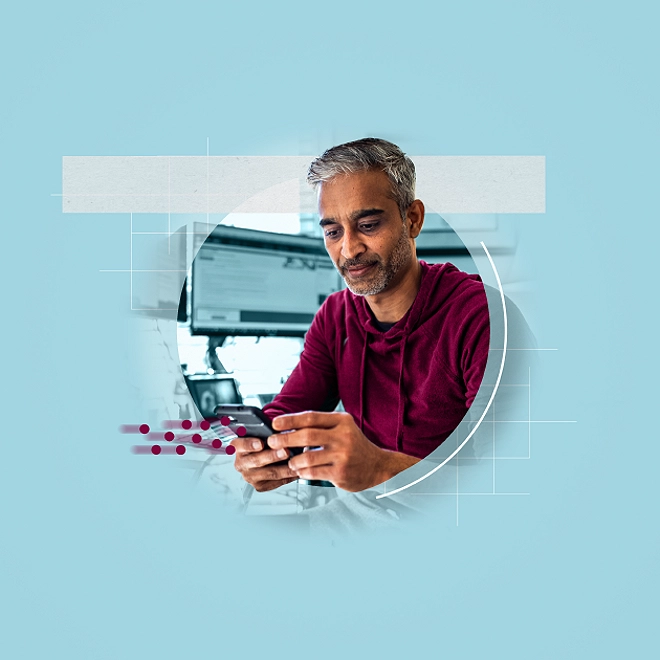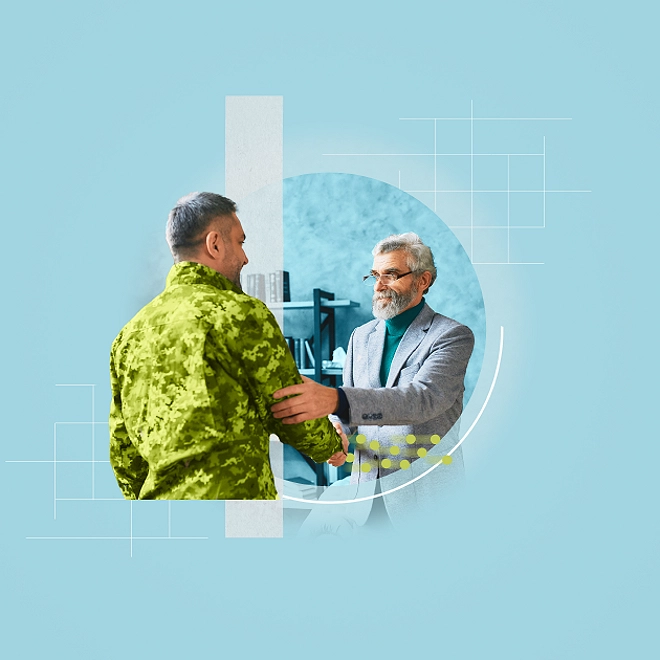Back-office innovations improving mission performance
Government back-office functions and processes are moving beyond automations and internal efficiency
Introduction
Entire industries have grown up around some tools to improve back-office operations. Data analytics is its own field, cloud technology conferences are now a staple in major cities around the world, and automated processes operate like engines in the background of the digital economy. As both back-office and mission tasks center more on information, many government organizations are finding that back-office innovations not only improve efficiency but can also have considerable mission benefits.
Technology is just one factor turning the back office into a launchpad for better service delivery. Investments in cloud data storage not only improve the efficiency of the IT function but can also make mission data available to decision-makers in new ways. New recruiting approaches can attract workers with critically needed skills.
While shifting how government agencies procure can allow them to create fundamentally new ways of delivering services to citizens, it also forces organizations to work in new ways. As changes to back-office systems—from procurement to human capital to technology systems—enable mission innovation, they require back-office and line-of-business leaders to work together to quantify the value of innovations in new ways.
These changes can be challenging, but by working with the right partners and keeping mission outcomes in mind, government can incorporate new tools to help make operations more efficient and missions more effective.
Walls coming down
- Barriers between back office and front office: The mindset that places a wall between front office and back office won’t survive. Agencies should view back offices as mission-enabling offices that are key to achieving an organization’s mission.
- Barriers between legacy and new technologies: Numerous legacy systems underpin key government services, and not all systems need to be replaced. One key to both back-office and mission innovation is harmonizing technology, both new and old.

Trend in action
Back-office innovations and mission tasks are converging
As both mission and back-office tasks become increasingly data-focused, improvements to one area can benefit the other. Many government agencies across sectors are using data to innovate back-office functions to allocate resources, identify risks, and improve service delivery.
Allocate resources: Components within the US National Institute of Health (NIH), the biggest funder of biomedical research in the world, deployed artificial intelligence (AI) to assist in assigning grant applications to appropriate review groups.1 Prior to this, staff would manually read applications to sort them by scientific discipline—a process that took several weeks and delayed the referral process. The AI tool scans an application’s text, title, and abstract and assigns it to an appropriate group with 92% accuracy.2 This innovation has reduced the time taken to process grant application from 2–3 weeks to less than a day, ultimately accelerating NIH’s core mission of making scientific discoveries.3
Identify risks: Transport Canada, the department responsible for regulating transportation, receives nearly one million preload air cargo records a year. It began requesting these records after authorities (acting on a tip-off) intercepted two bombs hidden inside LaserJet printers shipped in 2010.4 Transport Canada hoped to identify other potentially dangerous cargo early. Reading manifests by hand simply wouldn’t work.5
An AI tool came to the rescue. Using previous air cargo records and the results of manual risk assessments, Transport Canada trained an AI model to rank cargos by likely level of risk. In parallel, they trained it with natural language processing to sort cargo into meaningful categories. Combining these capabilities, the tool collects detailed cargo data, detects anomalies, and identifies unusual patterns for staffers to evaluate.6 The back-office task of reading manifests not only speeds processing, but also helps protect Canada’s air, rail, and other freight.
Improve service delivery: Trelleborg, Sweden, has used AI to automate various social assistance decisions. The automated decision-making system has reduced the time to process applications for home care and sickness and unemployment benefits from 10 days to less than 24 hours. Caseworkers review applications the system rejects to ensure the AI has not made an incorrect decision.7
Reimagine operations: Cascais, Portugal, reimagined its operating model through digital twins by integrating data from multiple verticals, ranging from health and transportation to energy and public infrastructure. Implementation of their smart waste-management system combined with real-time traffic data allowed the city to optimize routes, identify best times to collect waste, and reduce operating costs by 40%.8
Breaking down barriers between back-office and mission innovation changes how value is created
Governments are recalibrating. To make the most of new technologies, back offices should streamline workflows. A Deloitte AI survey revealed that organizations that have significantly changed workflows are 36% more likely to achieve desired outcomes from their AI projects.9
The United Kingdom’s “Tell Us Once” program allows residents to notify tax authorities, the passport office, local governments, and benefits programs with a single click, instead of notifying each agency separately. The program rests on a new application programming interface (API) that allows for the sharing of information between agencies while still preserving citizen privacy. But this new technology needed to be complemented with new business processes within each agency to take advantage of it. The benefits of such changes may be far-reaching. Not only can it reduce citizens’ efforts, but the program also saves the UK government £20 million annually.10
Saving money is not the only way to quantify the value of an innovation. Breaking down the barriers between back office and mission also mean that improvement to mission can be an important way to quantify the value of an innovation. For example, moving to an intelligent digital process helped the US Department of Education improve the application process for student aid. The redesigned back end allowed students to pull tax information directly from the Internal Revenue Service systems and include it in the application. This redesign was designed to simplify the process, increase accuracy, and reduce improper payments. Furthermore, the application saves students’ personal information, so they don’t have to reenter it when they apply the next year.11
But new innovations creating value in new ways often won’t work with old business processes. Rather, creating new processes can better fit innovations to the value they create, increasing time savings and reducing backlogs. In 2016, Azerbaijan automated a system to clear 165,000 uncontested court cases. Just as some automatic processes must be integrated with current back-end systems, this one had to be integrated with the legal system. New legislation was needed to allow for electronic filing of court documents and centralized management of those cases. With that legislation in place, the pilot could proceed, and the average time to clear a case dropped from three days to one.12
These shifts change how work is done and who is doing it
Governments can tap into external ecosystems to reimagine their back office. Many of the capabilities and infrastructure to support data-driven decisions may reside outside of government.
During the pandemic, demands on government services increased and changed how citizens requested those services. People applied online for services they used to wait in line for. Many government agencies turned to the private sector to upgrade their technology systems to meet demand. In our 2021 global digital survey of government officials, 85% of respondents said that collaborating with external partners positively impacted their agencies. More than 80% also indicated the same for the use of contractors.13
VITAL, a government shared-services agency in Singapore, is launching a cloud-based platform that would make robotic process automation (RPA) a norm for finance, HR, and procurement services. Agencies are expected to be able to use the platform to generate reports from extracted data, send automated notifications, and reconcile data and information through software bots.14 For recruiting, VITAL partnered with an external AI provider to enhance the existing process. The AI solution can help agencies incorporate inclusive hiring processes by masking personal information, automate screening and matching, and verify candidate documents. It ultimately is designed to help multiple agencies reduce the time and cost to hire talent.15
Engaging the right partners can also reduce the risks of modernization. The US Food and Drug Administration (FDA) used a managed-services approach to automate its highly complex and manual invoice processing. The FDA used RPA bots to input data and perform calculations on the invoices, some of which were 50 pages long with more than 500 line items. The bots sped up the process and reduced human error. The automation is designed to help the agency meet governmentwide objectives of modernization, improve transparency, and accountability to Congress and taxpayers.16 The FDA’s choice to use managed services meant that it could quickly deploy the bots without having to train or hire a dedicated workforce. The managed-service contract also covers continuous maintenance of software and retraining of bots to respond to future conditions.17
Resettlement agency uses AI for refugee placement
Some host countries receive tens or even hundreds of thousands of refugees for permanent resettlement each year. Administrators or reception staff then decide in which communities to place them, based on available housing or predefined allocation rules.
The Hebrew Immigrant Aid Society (HIAS), a refugee resettlement agency, teamed up with researchers at the University of Oxford, the University of Lund, and the Worcester Polytechnic Institute to repurpose existing administrative data to improve refugee placement.18 The team built an AI-based tool to recommend areas where refugees are more likely to find employment.19
The tool applies machine learning methods to find patterns in a large data set of all placements that HIAS had collected over the past decade. The algorithm can pick out the characteristics of refugees that make them likely to find employment in particular communities. It also considers that communities have the capacity to meet the specific needs of refugees. This isn’t just housing. If refugees speak only Arabic, then the tool would place the refugees in communities where at least some support staff speak Arabic. By breaking down the barriers between back-office data and mission goals, the tool has boosted employment chances by at least 30%.20
Moving forward
- See all investments through a mission lens from the start: Build the back office by applying a mission lens to investments.21
- See the mission in everything: A mindset that takes the back office for granted may prevent growth. It should not be a static cost center. To break the mold, the back office should be run like a business, measuring performance and assessing outcomes against set performance metrics.
- Overcome siloed technology systems: Many agencies store data on fragmented legacy systems. Integrating data across agencies can multiply its benefits and interagency policies.
- Innovation is more than just new technology: Innovation requires redesigning processes that can adapt to new technology. Dropping a new software on top of legacy systems won’t cut it. Assess your current manual workflows and decide what changes need to be made before digitizing the workflows.
- Don’t try to do it all alone; take advantage of partners’ expertise: As technology and data augment back offices, agencies should look to partners to reimagine what this quiet engine of productivity can do.
My take
Dennis Lui, chief executive, VITAL, Ministry of Finance, Singapore
Leveraging technology for corporate services transformation—the VITAL experience
VITAL is Singapore Public Service’s central agency for corporate shared services. We serve over 100 agencies and more than 100,000 public servants. Our staff strength is approximately 500—almost 3% are persons with disabilities. We aggregate and transform common corporate services in areas such as human resources and payroll, finance, and procurement to achieve economies of scale, improve efficiency, strengthen governance, and enhance service quality.
VITAL is constantly exploring new technologies to make government services even more efficient and robust. We are a pioneer adopter of robotics process automation (RPA) in public service. RPA application has helped us reduce manual effort, human errors, and turnaround time substantially. This translates to delivering more effective corporate services to the public service agencies that we serve.
In 2020, VITAL was entrusted with a new role as the robotics and automation lead in corporate and administrative services. VITAL’s ambition is to scale up the adoption of automation across Singapore Public Service. VITAL is now a platform for corporate services innovation. We actively seek opportunities to partner with policymakers, public service agencies, and vendors to help transform the delivery of corporate services. For instance, we are harnessing artificial intelligence and machine learning recruitment technology for process automation and better decision-making, enabling data-driven insights for a more effective end-to-end recruitment process.
VITAL is developing central infrastructure, using a “build once, use by many” approach. If each of the 100 public service agencies tried to develop its own tools, it would take hundred times the effort. We are creating a cloud-native automation platform to allow agencies to access best of breed automation tools without having to dedicate time or staff to build them on their own.22
These new automation tools will augment rather than replace our workforce. The workforce of the future would be “citizen developers”—using low-code/no-code applications to develop and maintain their own bots and workflows. The bots will do the heavy lifting while officers can become “supervisors of bots,” with a focus on continuous process improvements, exception handling, and other higher-value–added tasks. However, to become “citizen developers,” significant investment in human capital is required. Therefore, VITAL is sending all our staff back to school—to be equipped with either a certificate or a specialist diploma in data analytics, RPA, and design thinking.
To conclude, the application of robotics and automation is not just enabling VITAL to provide public service agencies with more effective and efficient services; the core of our purpose is to equip and empower our people by giving them the tools and opportunities to move up the value chain. VITAL will become an engine of transformation for Singapore Public Service.
Deloitte Center for Government Insights
The Deloitte Center for Government Insights shares inspiring stories of government innovation, looking at what’s behind the adoption of new technologies and management practices. We produce cutting-edge research that guides public officials without burying them in jargon and minutiae, crystalizing essential insights in an easy-to-absorb format. Through research, forums, and immersive workshops, our goal is to provide public officials, policy professionals, and members of the media with fresh insights that advance an understanding of what is possible in government transformation.
Reimagine your path. Revitalize your mission.
From safeguarding troops to providing a safety net for seniors, the work that government and public service (GPS) organizations do is essential to the constituents they serve. And with ever-increasing demands, the pace at which they can deliver on their missions depends on the capabilities and processes they have in place. Deloitte's GPS Operate Services can expand your capabilities with our innovative, public sector–focused portfolio of services and solutions that improve efficiency, modernize operations, and free up your time and resources so you can find new ways to advance your mission.



